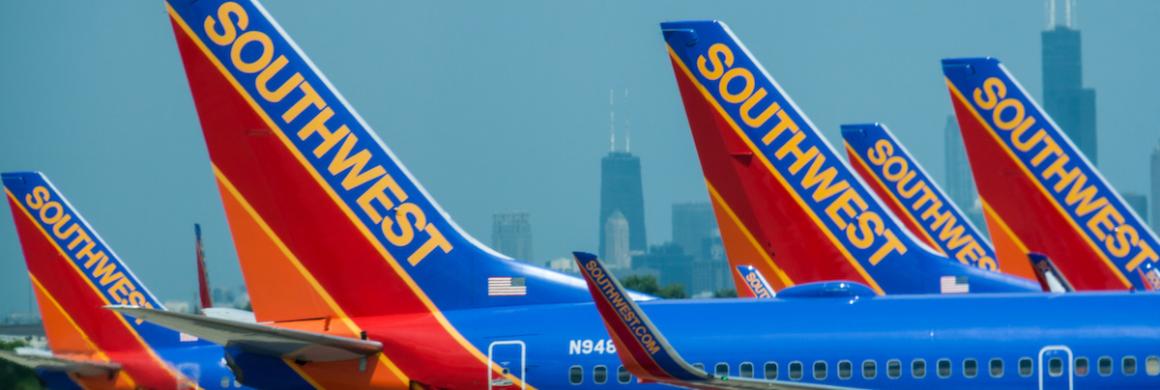
Can Southwest Airlines Fix Its Systemic Weaknesses In The New Year?
By Hersh Shefrin
Southwest Airlines’ flight cancellation fiasco has drawn attention away from the company’s otherwise strong culture. For decades, Southwest has been one of the country’s leading airlines. As an example, it carries more passengers within California than any other airline. California is especially important because, according to Bloomberg, the state is poised to become the world’s fourth largest economy, soon to overtake Germany. Many California residents who work in politics rely on Southwest to commute between Sacramento, the state’s capital in Northern California and the population center in Southern California. Most of the time, Southwest’s system works: but not during Christmas of 2022 when its system came apart.
In my books Ending the Management Illusion and Behavioral Risk Management, I profiled Southwest for both its strengths and its weaknesses. These books describe how psychological pitfalls infect many organizations’ processes and culture. In both books, I suggest that organizations with strong cultures find ways to mitigate susceptibility to the impact of psychological pitfalls, thereby lowering risk exposures.
In both books, I discussed why vulnerability to pitfalls led Southwest to face an elevated risk that the roof of one of its 737 planes would tear open in midflight. Such an event would lead to a decrease in air pressure and the possibility of passengers or crew dying by virtue of being sucked out of the aircraft.
Ending the Management Illusion was published in 2008. In 2011, the roof of a Southwest Airlines flight tore open in midflight. A flight attendant was injured, but nobody on the flight died.
Behavioral Risk Management was published in 2015. In 2018, the engine on a Southwest flight exploded, causing a passenger to die when she was sucked out of the aircraft.
Both of the events just described pertain to weak maintenance, for which the Federal Aviation Administration levied substantial fines on Southwest. Maintenance is part of capital budgeting, and the executives at Southwest appear to have a serious problem with managing risk around capital budgeting.
When I was writing Ending the Management Illusion, I interviewed executives at Southwest who had built its culture from the ground up. The head of its human resource (HR) leadership team took great pride in what the company had been able to accomplish; and this person excitedly told me about having been inspired by an approach called open book management. While I remember being impressed by what I heard, I also remember that other members of the HR team expressed concerns about the situation at Southwest not being quite as rosy as had been portrayed.
Planes need to be maintained. Information technology needs to be maintained. Southwest appears to skimp when it comes to both.
The December 2022 scheduling fiasco was the result of skimping on information technology. I am old enough to remember when Microsoft introduced a new operating system called Windows 95, to replace its predecessor operating system Windows 3.1. The 95 in Windows 95 refers to the year of its introduction: 1995. By some accounts, major portions of Southwest’s scheduling system for pilots and flight attendants is built on the Windows 95 platform. That platform is now more than 25 years old.
There is wisdom in the expression “if it ain’t broke, don’t fix it.” The trouble is that some of Southwest’s critical software was beginning to break. Indeed, Southwest pilots and flight attendants had been complaining to executives, through their unions, that the company’s scheduling software was problematic; and they had been complaining for quite some time.
People can learn. It is just that because of psychological vulnerabilities, they learn slowly and painfully. This was the case with Southwest executives who now say they are doubling down on what will be a very large investment in upgrading their information technology systems.
There is a list of usual suspects when it comes to the kinds of psychological vulnerabilities which created Southwest’s December 2022 fiasco. Here are three examples. The first is a self-control problem called “present bias” which undervalues the future relative to the present. To take an analogy, consider a person who has a toothache but is afraid to visit the dentist in order to get a cavity filled. As a result, the person delays making an appointment, and the toothache gets worse. In the end, though, the pain becomes so bad that the person does eventually visit the dentist. The trouble is that the decay has progressed to the point where tooth extraction is required, instead of a simple filling. It appears that Southwest is like the person who is afraid to go to the dentist, only for Southwest the fear relates to investing in technology.
The second vulnerability stems from the imprudent risk taking. Southwest bore a lot of risk that its creaky scheduling software would crash during a crisis. People who set high aspirations often become willing to take risks in order to increase the likelihood of meeting those aspirations. The behavior is called “aspiration-based risk taking.” Southwest executives have always had high aspirations, and have established a track record of meeting those aspirations. However, risk takers need to rely on luck, and in December 2022, Southwest’s luck ran out.
The third vulnerability is known as the “endowment effect” whereby people attach additional value to an object they regard as theirs, relative to other similar objects that they do not regard as theirs. Southwest’s scheduling software was home grown. It had sentimental value. Sentimental value has a price, which Southwest paid that price by failing to purchase reliable scheduling software from an external vendor.
Fixing Southwest’s information technology weaknesses will be expensive. There is good reason to believe that the company will do it, having learned the lesson the hard way. By lesson, I mean the narrow lesson about needing to have reliable scheduling software. Whether Southwest executives have enough self-awareness to learn the bigger lesson, about their psychological Achilles’ heel, is another matter. During 2023, Southwest’s customers, and its investors, will be watching, and hoping for a good year.
This column originally appeared in the Dec. 31, 2022 edition of Forbes.

